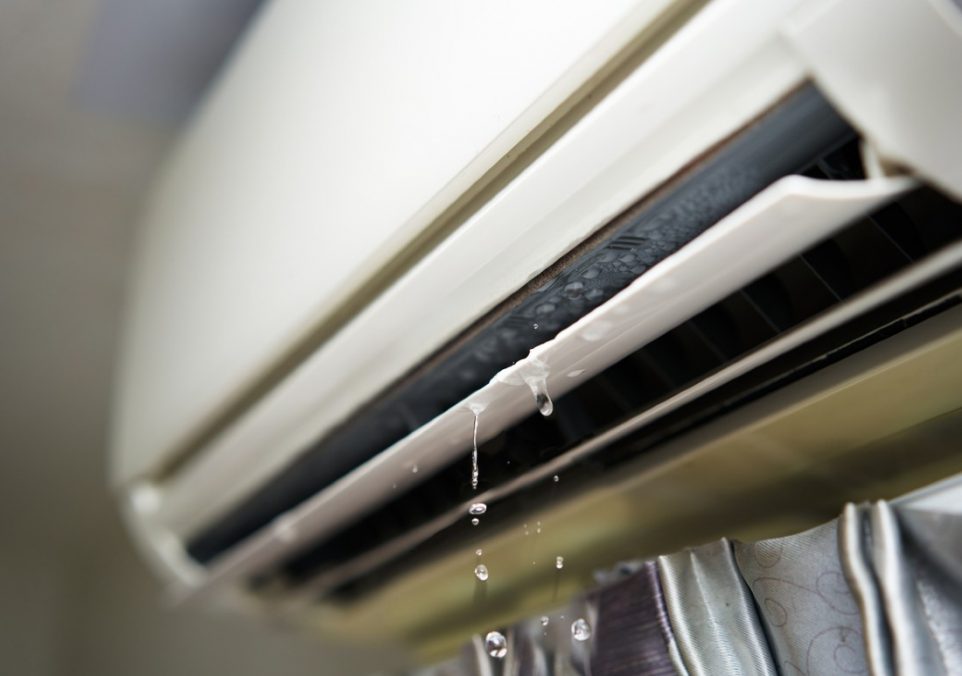Is Your Air Conditioner Leaking Water? Here Are Some Common Issues and Fixes

As the summer heat intensifies, many of us turn to our trusted air conditioners for relief. However, nothing dampens the mood quite like noticing a puddle forming under your unit. If you’ve encountered this, you’re not alone; it’s a common issue, but understanding why your air conditioner might be leaking can save you time, money, and a lot of hassle.
One of the primary functions of an air conditioner is to pull humidity from the indoor air, which condenses on the cold evaporator coil and then drains away. When something in this process goes awry, water that should be expelled can end up on your floor instead. Several factors can lead to this issue, ranging from simple blockages to more complex mechanical failures.
Blocked Condensate Drain Line
The problem: The most frequent culprit behind leaking ACs is a blocked condensate drain line. This pipe, typically made from PVC, channels condensation from the evaporator coil to your home’s drainage system. Over time, dirt and debris can accumulate, especially if air filters aren’t changed regularly or the system isn’t cleaned. These blockages prevent water from draining properly, causing it to back up and spill out of the unit.
How to fix it: Fixing a clogged condensate line can often be straightforward. A common method used by technicians involves using compressed air to blow out the blockage. However, for a more thorough cleaning, you might consider removing the pipe and flushing it with water outdoors. Reattaching it may require some basic plumbing skills, like using PVC glue to seal the connections and ensuring it doesn’t leak once replaced.
Dirty Evaporator Coil
The problem: The refrigerant absorbs heat in the evaporator coil, making it a critical component of your system’s cooling process. When layers of dirt and grime accumulate on the coil, it acts as an insulator, reducing the coil’s ability to absorb heat and causing the system to work harder to cool your home. This not only leads to decreased efficiency but can also increase your electricity bills. A dirty coil may lead to other mechanical problems. For instance, the restricted heat exchange can cause the system to overheat and shut down prematurely.
How to fix it: Regularly cleaning your evaporator coil is crucial, not just for preventing leaks but also for maintaining optimal performance and extending the lifespan of your unit. While many homeowners may feel equipped to handle cleaning the evaporator coil on their own—usually done by carefully removing debris and applying a non-corrosive cleaner—it’s often advisable to enlist the services of a professional.
Cracked Drain Pan
The problem: The drain pan plays a vital but often overlooked role in your air conditioning system. While it might seem like just a simple tray, the pan ensures that condensation from the evaporator coil is collected and directed away from crucial components, preventing water damage and leaks into your living space. However, due to its constant exposure to water and fluctuations in temperature, the drain pan is susceptible to wear and tear. Corrosion over time is common, particularly in pans made of metal. Plastic pans, while not susceptible to rust, can become brittle and crack.
How to fix it: Identifying a cracked drain pan involves visual inspection, which might require the disassembly of part of your air conditioning unit. If you find that the pan is indeed cracked, replacing it promptly is crucial to prevent water damage to your home. While some DIY enthusiasts might attempt this repair, the process can be delicate, particularly when it involves lifting or moving the evaporator coil.
Frozen Evaporator Coil
The problem: A frozen evaporator coil can be a sign of several underlying issues within your air conditioning system. This problem often starts innocuously with something as simple as a clogged air filter. When the air filter is dirty, airflow through the coil is impeded, leading to a drop in temperature and eventual freezing of the condensation on the coil. However, more complex issues like refrigerant leaks can also cause the coil to freeze. Refrigerant leaks not only reduce the efficiency of your air conditioner but can also pose health risks, making it essential to address them promptly.
How to fix it: When the evaporator coil freezes, the ice buildup can obstruct further airflow, exacerbating the issue and potentially leading to system failure. Once the system is turned off and the ice melts, it can result in an overflow of the drain pan, particularly if the pan is already damaged or not sized adequately for such a volume of water. Addressing a frozen coil involves first turning off the unit to allow the ice to melt and then diagnosing the cause of the freezing.
DIY or Professional Help
For the handier among us, tackling the first couple of issues might be within reach with some basic tools and a bit of patience. However, for anything involving refrigerant or when you’re not quite sure what to do, it’s wise to contact a professional. HVAC technicians can diagnose the problem more accurately and have the tools and skills to fix it efficiently, potentially saving you from a more costly repair down the line.
Dealing with a leaking air conditioner can be a nuisance, but understanding the common causes and knowing when to call in a professional can make all the difference. Keep your cool this summer, both literally and metaphorically, by staying on top of your air conditioner maintenance and addressing any issues as soon as they arise.